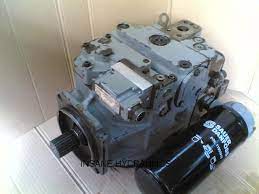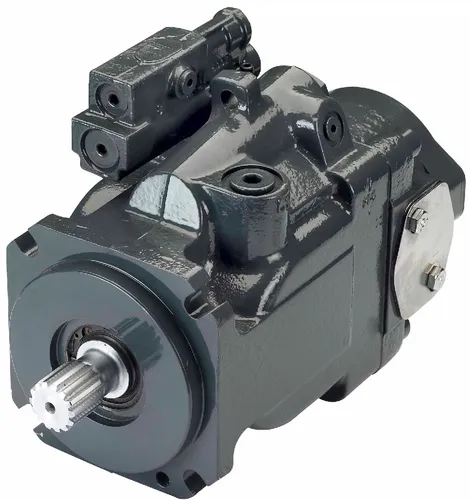john deere hydraulics troubleshooting
John deere hydraulics troubleshooting is not a big deal! The question is how to maintain your excavator hydraulics? How do you repair john deere hydraulic systems when they break down? Despite the fact that these machines are made for farming, the manufacturers themselves don’t really reveal the secrets about them.
Air in the john deere hydraulics system troubleshooting
Bubbles in your John Deere hydraulic system can be very troublesome. Often times it will lead to the entire hydraulics system failing. This symptom usually happens when you have issues with seals at the swivel end or the main seal in the gearbox.
What will happen if there is air trapped in the John Deere hydraulic system?
Air in the hydraulic system can be a critical issue, especially if you’re operating heavy machinery. If there is air trapped in the John Deere hydraulic system, the system will not operate correctly and may result in damage to the pump assembly. The John Deere hydraulic/hydrostatic system depends on high-pressure, low-volume liquid to drive the tractor and implement. Air under pressure acts very differently from liquid under pressure.
When air reaches a leak or small opening, it rushes to escape. Air entering the John Deere hydraulic system may cause erratic operation of the lift arms or implement without any warning. In addition, air pockets in the system may cause cavitation of the hydraulic fluid, which is when pockets of air form inside the fluid due to drops in pressure. This causes metal particles from inside the pump to break off and circulate through the hydraulic system. The metal particles will damage each internal component they touch, causing even more damage to the hydraulic system. Once metal particles are released into your John Deere’s hydraulic system, disassembly and cleaning of all internal components is necessary to restore proper operation of your equipment.
How do you bleed air from a John Deere hydraulic pump?
Bleeding air from a John Deere hydraulic pump is not difficult. You should follow the instructions below:
1. If you live in an area where there is a lot of moisture in the air, such as near the ocean or where there are large bodies of water, it is best to check your hydraulic system monthly. If you live in a dry area, it is still good practice to check the system monthly, but you may need to bleed it more often than that.
2. Start by turning off all pumps and motors that use hydraulic oil. Then turn off the engine and take off any hoses connected to it.
3. Next, remove any filters from your system if they have been installed recently. Take care not to damage them when removing them if possible as they are expensive and hard to find sometimes.
4 .Now start your motor and let it run for about 15 minutes. This is so that all of the oil goes through all of your lines thoroughly before you bleed anything out of them. This will ensure that there won’t be any air trapped inside them during this process. If you have any air trapped in them when you start bleeding, it can cause problems later with your equipment working properly if this happens. So just keep letting it run until all the oil has gone through everything thoroughly and then stop the motor.

John Deere hydraulic system to lose pressure troubleshooting
Hey, for anyone facing a problem with the loss of pressure in the system, this post will be a huge help. This is the part of problems we are most concerned with since it can become problematic anytime of use and render us helpless!
What causes a John Deere hydraulic system to lose pressure?
There are a number of things that can cause a John Deere hydraulic system to lose pressure. The most common reason is a leak in the hydraulic line or a leak in the hydraulic pump itself.
If there is a leak in the line or pump, then you will see pressure loss when applying the brakes, but if you apply the brakes and then turn off the key, then you will see no pressure loss after turning off the key. This type of failure will also be evident by excessive oil leakage on the ground under your tractor.
Another possible cause could be an air leak in your system. Air leaks can be caused by cracks or punctures in hoses or pipes, or by worn out seals and gaskets on valves or fittings. Air leaks may not always show up right away, but over time they can cause damage to your equipment because they allow contaminants into your system that could destroy seals and other parts of your equipment over time.
How do you release the pressure on a John Deere hydraulic system?
You can release the pressure on a John Deere hydraulic system several ways. The first method is to turn off the tractor and let it sit for at least 30 minutes. This will allow all of the pressure to bleed out of the system. Once the pressure has been released, you can then check your oil level with an oil dipstick. If you have too much oil in your system, there could be a leak somewhere that needs to be addressed.
Another way to release the pressure on your John Deere hydraulic system is by opening up a bleeder valve on each cylinder head. The bleeder valve will bleed out any remaining pressure in each cylinder head so that you can check for leaks. You should also check for leaks around hoses and fittings after bleeding out all of the line pressure from each cylinder head.
If you need help determining where your hydraulic leak may be coming from, call us today!
How do you release pressure from a John Deere hydraulic coupler?
If you need to release pressure from a John Deere hydraulic coupler, it can be done easily with just a few tools. You’ll need a rag and an open-end wrench.
To begin, put the rag over the quick connect fitting in order to protect the fitting from damage as you loosen it.
Next, put the wrench on the coupler and loosen it by turning counterclockwise. You should avoid using excessive force when loosening the coupler, so make sure that you’re not cross-threading or otherwise damaging the coupler while working on it.
Once you’ve removed the quick connect fitting, be sure to inspect it for any signs of damage. If you do notice any damage, make sure that you replace it with a new one.
How do you release the hydraulic pressure on a John Deere skid steer?
The hydraulic system is one of the most important parts of your skid steer. It allows you to control the movement of your machine and do the work that you need to do. The hydraulic system on a John Deere skid steer is made up of several components, including valves, cylinders and lines.
There are two ways that you can release the pressure in your John Deere skid steer: manually or automatically. In this article we will show you how to manually release the pressure in your machine.
The first thing that you need to do is shut off the engine and turn off all power sources for the hydraulics. This means turning off the battery switch and disconnecting any battery cables that are connected to it. Make sure that all electrical connections are disconnected from their terminals on both sides of the battery terminal block or fuse panel.
Next, open up all valves on all cylinders by turning them counterclockwise with a wrench until they stop turning. This will allow any remaining oil in your system to drain out into a pan or bucket below each cylinder head so that it does not get trapped inside of your system when you disconnect it from its source of power (the engine).
John Deere hydraulic fluid troubleshooting
Are you looking for John Deere hydraulic fluid troubleshooting? You’ve come to the right place. In this guide, you can find everything you need with easy to follow instructions.
How do you check John Deere hydraulic fluid on a John Deere skid steer?
The hydraulic fluid used in a John Deere skid steer is highly pressurized, and it is also very hot. As such, you need to make sure that you always follow the proper procedures when you check the fluid. The first thing you will want to do is park your machine on a level surface. Next, you will want to set the parking brake and make sure the engine is off. Once you have done that, open your hood and locate the sight glass on your hydraulic reservoir tank.
The sight glass should have a clear tube with a gauge on top of it. Unscrew the cap on the sight glass and remove any dust or dirt from around it by using compressed air or a damp cloth. After that, check if there are any bubbles visible in the line of sight. If there are bubbles visible then this is an indication of air being trapped inside of your system and this can cause damage to your pump. You will then want to fill up your tank with hydraulic fluid until it reaches the full mark on your sight glass.
Where do you fill John Deere hydraulic fluid in a John Deere tractor?
If you’re a John Deere fan, you’ve likely been daydreaming about your perfect tractor since you were a kid. But even if you’re an experienced tractor owner, all the options and choices can seem overwhelming. We’ve created this guide to walk you through the process of finding the right John Deere tractor for your needs.
Depending on the model, there are different locations to fill hydraulic fluid. The owner’s manual that comes with your tractor should explain exactly where to fill it; however, in general, the hydraulic fluid reservoir is usually located near the rear of the machine and will be labeled “hydraulic fluid.”
Once you find the reservoir, start by removing the dipstick from it. Next, pour hydraulic fluid into the reservoir until it reaches between three-quarter and full capacity. Replace the dipstick and check for leaks at both ends of it (where it enters and exits). If there are no leaks or drips, close up all of the panels covering the engine compartment and start your tractor.
How do you change the John Deere hydraulic fluid on a John Deere?
Changing the hydraulic fluid in your John Deere tractor will help keep your tractor running with power and efficiency. Here are the steps you need to follow to change the hydraulic oil on a John Deere:
1. Park your John Deere tractor on level ground, set the parking brake, and shut off the engine.
2. Remove the drain plug from the bottom of the hydraulic pan. If you have a new John Deere, you may not have a drain plug; if this is true for your machine, you will need to remove the entire pan.
3. Drain all of the old fluid from the pan. Be sure to get as much of it out as possible—this is one of those jobs that’s easier if you can do it twice than if you have to do it again next week!
4. Replace any O-rings while the pan is off. You’ll save time and hassle later on by doing this now rather than letting them deteriorate further, at which point they could cause leaks or other problems with your machine’s hydraulic system.
5.Clean the area where the filter seals into place with a rag and some solvent (not gasoline or acetone). Wipe away any dirt and debris that’s accumulated there.
How do I check the John Deere hydraulic fluid level?
In a friendly tone: To check the hydraulic fluid level on your John Deere tractor, start by making sure the tractor is off and on level ground. If your tractor has a rear-mounted hydraulic pump, it may have one sight glass located on each side of the pump base. If you have a front-mounted pump (usually found on older models), you’ll find the sight glass in front of the pump. The location of the sight glass could vary depending on your model, so consult your owner’s manual if you can’t locate it. Once you’ve found it, clean any debris from around it and observe the fluid level through the glass.
It should reach about halfway up the glass—any lower than that and you’ll need to add some more hydraulic fluid. Be careful not to overfill the reservoir; adding too much fluid can cause air to become trapped in the system and reduce its effectiveness. You should also make sure that only JD 303 or UTTO (Universal Tractor Transmission Oil) is used as hydraulic fluid; other types may not work as well with your tractor’s transmission parts. If you’re not sure what type of fluid to use, consult your owner’s manual or take a sample of your current fluid to your dealer to be identified.
John Deere hydraulic Valve troubleshooting
Check Your Hoses? Why Hoses Are Important and How They Affect Your John Deere Equipment: a blog around John Deere valve issues along with tips on how to fix them.
How do I know if John Deere hydraulic valve is bad?
This is an easy problem to fix. If there is a problem with the hydraulic valve, then you will want to replace it. It is important to know how to check whether the hydraulic valve is bad or not. To do so, you should first check what kind of John Deere tractor you have. Some are equipped with a manual transmission and some are equipped with an automatic transmission.
If your tractor has a manual transmission, then you will need to find out if your John Deere tractor has a clutch or not before you can replace the hydraulic valve. If it does have a clutch, then it’s probably going to be replaced anyway since most tractors that have clutches are equipped with them for safety reasons.
If your John Deere tractor does not have a clutch, then you can simply remove the old valve and install a new one in its place without any trouble at all. Just make sure that you don’t over-tighten anything when installing the new valve because it might damage something else inside of your John Deere tractor such as an oil filter or even worse: the entire engine block itself!
John Deere hydraulic Valve spool stuck
My John Deere hydraulic Valve spool got stuck. I removed the 3 bolts, but it is still stuck. I tried to move it by hand and it will not budge. I can’t get anything to work. Does anyone have any ideas how I can get this thing out?
I did a Google search for this problem and all the posts say that you need to loosen the nut on the back side of the valve spool then turn it with a wrench from behind. This is not possible with mine because there is no place to put a wrench behind it at all. There are no openings anywhere on this part of my tractor that would allow me to get a wrench in there and turn it like they say you should do in the post I read about someone having this same problem.
I have taken pictures of where my valve spool is located and where my three bolts are located so hopefully someone can tell me what they need to do so they don’t waste their time trying to do what everyone else has told them they need to do when that won’t work .
John Deere hydraulic Insufficient cooling
The John Deere hydraulic system has a cooling fan that is controlled by a thermostat. The fan should be running when the tractor is stopped and the engine running. When you are operating the tractor, the fan will stop when the temperature reaches 194 degrees F.
If you hear a clicking noise coming from under the hood, this may be coming from your cooling fan. If you hear this noise during operation, it means that the thermostat has failed and needs to be replaced.
To replace a defective thermostat on your John Deere tractor, remove the old one by removing its mounting bracket and disconnecting its electrical connector. Install your new thermostat in reverse order and test your tractor for proper operation.
Overheating of John Deere hydraulic system
Right now, we are experiencing some hot weather on the East Coast. What is the high temperature where you are? Hopefully, it’s not as hot as it is here in New Jersey. I actually looked up the temperatures this week because I was curious to see how hot it really was. On Monday, the high was 94 degrees; Tuesday and Wednesday were hotter at 97 degrees, and today is expected to be 98 degrees. It’s going to be a scorcher! I’m a good-weather person, but even I am finding the heat to be a bit oppressive.
The funny thing is that no matter how hot it gets outside, I still have to work on equipment. And when you’re working on equipment in this kind of weather, you can run into some issues with overheating if your machine isn’t properly cooled or if there’s an issue with your hydraulic system.
This morning, for example, I had to work on a John Deere tractor. The owner of this particular model had been complaining about his hydraulic system being slow and sluggish. When he brought it into our shop, we found that the hydraulic oil was brown and smelled burnt—and it was running excessively hot.
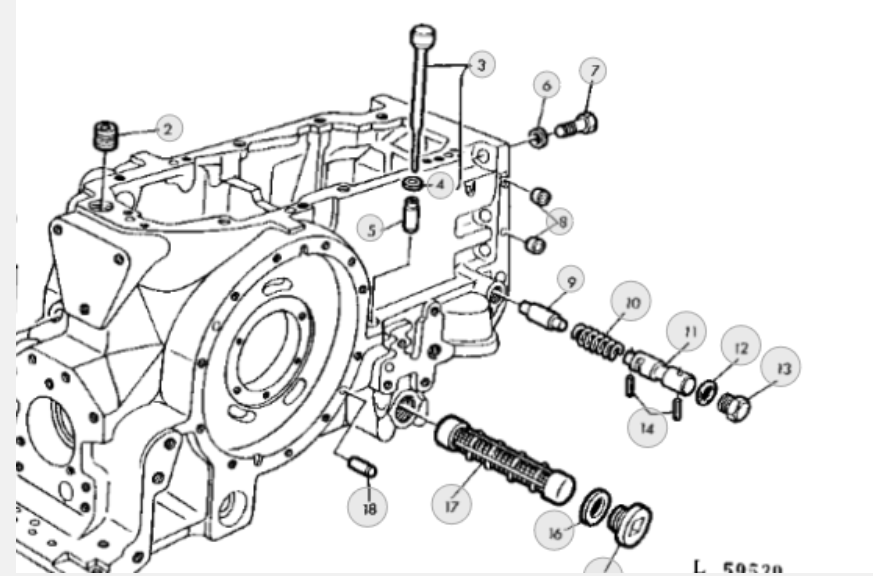
john deere hydraulics troubleshooting FAQ
Here are the most frequently asked questions about john deere hydraulics troubleshooting. If your question isn’t here, please contact us and we’ll add it to the list. Thanks!
john deere backhoe hydraulics troubleshooting
John Deere backhoe hydraulics troubleshooting is a common problem. It’s important to remember that a tractor with a working front-end loader is more than just an equipment tool, it’s also the lifeline of many farming operations.
The John Deere backhoe hydraulics system consists of three basic components:
The pump is the heart of the system. It supplies fluid to all other components and provides pressure for operation. The pump is driven by either compressed air or electricity, depending on model.
The filter traps dirt and sediment from entering your hydraulic system, keeping it in good working condition for longer periods of time.
The reservoir stores fluid from the pump and provides adequate pressure to operate all components within the system at full capacity.
john deere 750 tractor hydraulics troubleshooting
The pump on the tractor is what supplies the hydraulic fluid to the hydraulic cylinder or hydraulic motor. The pump takes suction from the reservoir and delivers it to the rest of the hydraulic system.
The hydraulics can be categorized in two types: open and closed. Open systems do not have a relief valve, so they operate at any pressure up to the maximum rated pressure of the cylinder or motor. Closed systems have a relief valve that blocks flow when pressure reaches its preset limit. If a closed system operates at too low of a pressure, then it may not be able to do work. The pump needs to supply enough flow and pressure to overcome the load being placed on it by various attachments for it to work efficiently.
A good way to troubleshoot any hydraulics issue is to check for leaks. Leaks can happen anywhere in the line, from where it connects to the cylinder or motor all the way back to where it enters into your tractor’s cab area. To check for leaks, look for damp spots on hoses and fittings as well as around areas where hydraulic lines enter into your tractor’s cab area.
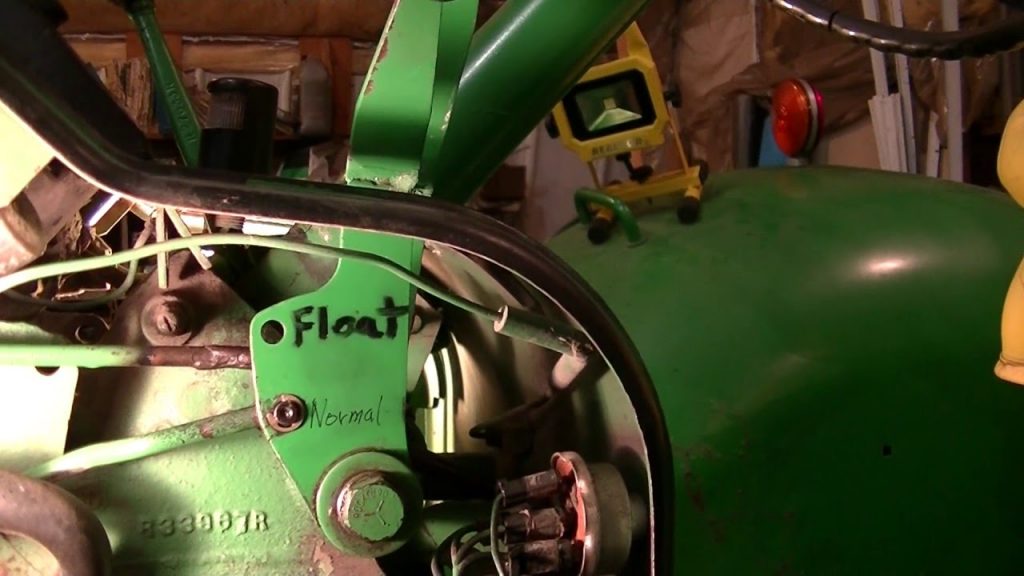
john deere 4440 tractor hydraulics troubleshooting
The hydraulic system of the john deere 4440 tractor is responsible for moving different parts of the machine, such as the bucket, boom, or arms. It works on a pressure basis and relies on a fluid to power it. The fluid is circulated within the system so that it can be pumped through pumps into pistons or other areas. Since this is a closed-loop system, you can easily troubleshoot problems with it by checking for leaks or damage in your john deere 4440. Inspecting each part of the hydraulic system can help identify where a problem may be originating from or what part needs replacing.
An important thing to keep in mind when inspecting your john deere 4440 tractor is that there are two types of fluids used in some models: engine oil and transmission oil. Engine oil will be found under your hood while transmission fluid will be located in an easily accessible compartment near the back of the cab area.
Both these fluids should never be mixed together because they have different properties – mixing them could cause damage over time from friction between components as well as overheating due to excess heat generated during operation which then causes internal components such as seals and hoses to wear out prematurely due to excessive wear on these parts.
john deere hydraulics troubleshooting 655
If you are not sure about how to use the John Deere 655 Hydraulic System Troubleshooting Guide, then you should take a look at the following tips.
1. You can easily identify the details of your tractor by looking for specific information on the serial number plate. This is usually located on the left-hand side of the tractor and will tell you when it was manufactured and where it was made. You can also find out the type of transmission, engine type and horsepower of your tractor from this plate.
2. If you want to know more about what is wrong with your tractor, you should take a look at your owner’s manual or any other service manual that might be available in your garage or local auto parts store.
3. You should always make sure that all fluids like oil and coolant are clean and full before starting up any work on your John Deere 655 Hydraulic System Troubleshooting Guide.
john deere x728 troubleshooting hydraulics
When you have problems with the hydraulics on your John Deere X728 tractor, it can be very frustrating. The best thing to do is to have a spare set of hydraulic hoses and fittings in your toolbox so that you can replace them quickly and easily. If not, then you may need to take the tractor in to an authorized John Deere dealership for repairs.
The first step in troubleshooting is to check for leaks. If there are no leaks and no fluid level problems, then the problem could be with the valves or pistons themselves. If there are leaks or fluid level issues, then it is likely that something went wrong with one of these components as well.
troubleshooting 3 point hitch hydraulics on john deere 6400
When troubleshooting 3 point hitch hydraulics on John Deere 6400, you must first determine if the problem is electrical or mechanical. The four most common areas of concern are the hydraulic pump, the hydraulic hoses, the hydraulic valve assembly, and the combination valve sub-assembly.
The hydraulic pump provides pressurized hydraulic fluid to move the lift arms up and down. When it is not getting enough hydraulic fluid, the lift arms will not function properly. If it is getting too much fluid, they will function too quickly. Either case can be dangerous.
The hydraulic hoses carry pressurized fluid from the pump to the valve assembly where controlled amounts of fluid are directed through smaller hoses to the combination valve sub-assembly or back to the reservoir to maintain a constant pressure in the system. If either of these hoses become pinched or kinked, insufficient or excessive amounts of fluid may reach their final destination and cause improper operation of the lift arms. If a hose should become disconnected from its port on either end, no fluid will move at all and there will be no operation of any kind.
troubleshooting john deere 4440 hydraulics
The hydraulic system on this tractor is very simple and straightforward. It consists of a reservoir, a pump and two lines that go to each lift cylinder. A single line comes off the top of each reservoir to feed the hydrostatic transmission and the power steering pump.
The most common problem on these tractors is a leak in one of the high pressure lines or hoses. The most likely culprits are at the O-ring seals on either end of the pump cover or at the fittings where you attach your hoses. If you suspect a leak, simply tighten all your connections using an appropriate wrench or socket. If there is still a leak, then it might be time to replace your O-rings or hoses.
troubleshooting john deere 750 hydraulics
1.Check the pneumatic valve that controls the flow of hydraulic fluid to the spool valve.
2.Check for air in the lines. Remove any air from the system by operating the boom cylinder control valve until all air is purged from the system, then close the cylinder control valve.
3.Perform a test using a pressure gauge and a vacuum pump to check for leaks at all fittings on each line in the hydraulic circuit (Figures 4-42 and 4-43).
4.Check for damaged or worn seals and replace as necessary (Figure 4-44).
5.Remove all dirt, grit, and foreign material from inside hydraulic cylinders with compressed air or a cleaning solvent, such as kerosene or diesel fuel (Figures 4-45 and 4-46).
john deere tuff torq hydraulics troubleshooting
If you have a problem with your John Deere Tuff Torq hydraulic system, you need to troubleshoot the issue before you can fix it. There are several different things that can happen to cause problems with your hydraulics and over time, these issues will become more frequent.
The first thing that you need to do is make sure that there is not a problem with your hydraulic oil. If there is something wrong with the oil, then it will cause problems in every part of your system from the pump down to the valves. This means that you will see problems in both high and low pressure systems.
You also need to make sure that there are no clogs in your lines or filters. These are very common problems with hydraulics because they tend to pick up dirt along with normal use which causes blockages in your lines and filters. If this happens, then it will cause problems with pressure loss, leaks and even damage to components within your system if they are not functioning properly due to lack of pressure.
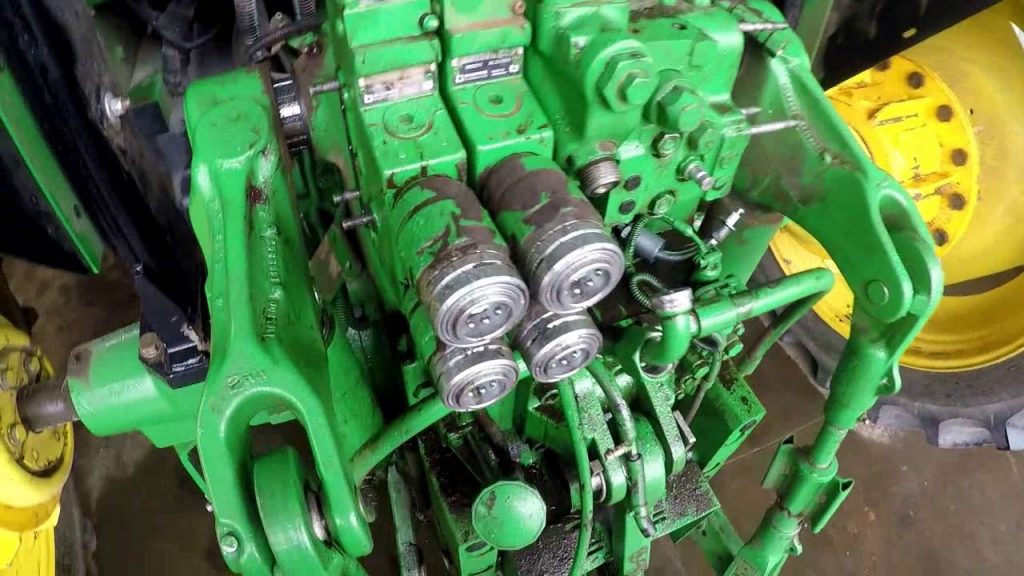
john deere 720 4wd tractor hydraulics troubleshooting
The hydraulics on the John Deere 720 4WD tractor are a key part of the farmer’s daily routine. When they fail, there is no other option besides finding out how to fix them. The first step in troubleshooting the hydraulics is to determine the problem. For instance, if the hydraulics have stopped working completely, it could be due to a malfunction or blockage in the hydraulic pump. Look for leaks in the line, and make sure that there are no cracked hoses.
If these things aren’t the problem, check to see if there is fluid leaking into or out of the tank. If this is happening, then you may have a blown seal or something else going wrong inside the tank itself. If you’ve ruled out all of these problems and still can’t figure out what’s wrong with your hydraulics, then there’s one more thing you should try: getting a new hydraulic pump!
If the pump isn’t working properly, it may not be delivering enough pressure to operate properly. Try replacing it with a new one. Make sure that all of your hydraulic filters are clean before putting anything back together again; otherwise debris could get caught in there which could cause further damage over time!
john deere 301a backhoe hydraulics troubleshooting
The John Deere 301A Backhoe Hydraulic System Troubleshooting Guide below will help you to troubleshoot your John Deere 301A Backhoe hydraulic system. Please use the guide below to help you determine where the problem may lie.
The first step is to ensure that all hoses and fittings are in good condition, free of cracks and leaks. If they are not, they must be replaced before proceeding further with troubleshooting.
Next check for proper fluid level and quality in the reservoir. Refer to your operator’s manual for more information on how to do this step properly.
If there is no fluid in the reservoir, then refill it with clean fluid from a clean container before proceeding further with troubleshooting. If there is too much fluid in the reservoir, then drain off some of it until there is just enough fluid for normal operation.
After ensuring proper fluid level in the reservoir, start up your tractor and operate it normally for several minutes while watching for leaks from anywhere on the system (hoses/lines/fittings). If there are no leaks, then proceed to step 3 below.
john deere 4200 tractor hydraulics troubleshooting
If the tractor is not running, then the first thing to check would be the battery. If you have a volt meter or test light, check the battery voltage with the ignition switch in the ON position. If you have 12 volts at the battery terminals, and when you put the switch in the START position, you have less than 10 volts at the battery terminals, then your starter is drawing too much current.
If there is more than 12 volts at the battery terminals when starting, then your alternator is bad. If you have less than 12 volts at the battery terminals with everything turned OFF (including headlights), then you probably have a bad connection somewhere between the battery and starter or alternator.
If you are getting good voltage but no crank when starting, then check to make sure your neutral start switch is working properly. The safety switch on a John Deere tractor is usually located on top of or behind the clutch/brake assembly under your seat. You can bypass this by jumping out a wire that goes to it, but it will not allow you to engage any PTO’s or to shift gears unless it is in neutral.
If you are getting good voltage and cranking speed but no firing of injectors, then verify that you have fuel pressure.
john deere remote hydraulics troubleshooting
John Deere remote hydraulic systems are used on a number of different pieces of equipment. They are used in the front end loader, backhoe, skid steer loader, and many other pieces of equipment. The remote hydraulics system uses a hydraulic pump that is mounted on the engine directly behind the radiator. There is also a hydraulic tank mounted on top of the frame between the rear axle and the cab. The remote hydraulic pump sends fluid through a hose to a control valve mounted on top of the loader or backhoe bucket. The control valve opens or closes depending on how much pressure you have applied to it from your thumb switch or joystick handle.
If your John Deere remote hydraulics system starts leaking or you notice that it doesn’t seem to be working correctly there are some simple tests that can be performed by yourself before taking your tractor into a service shop for repairs.
The first thing that you should do when troubleshooting this type of problem is disconnect any hoses from the loader or backhoe bucket so that there is no pressure being exerted on them while testing them for leaks.
troubleshooting john deere 8120 hydraulics
The first thing to check is the filter. If you have a bad one, it can cause problems with pressure and flow. The next thing to check is the pump. You can do this by removing the fuel tank and turning on the key. This will make sure that there is power going to the pump, but it will not test the valves or filters in the system. You need a scan tool for this.
If your tractor has hydraulic issues and you are not sure what they are, then you should take it to an authorized dealer as soon as possible. They will be able to diagnose any problems with your tractor more quickly than if you try to do it yourself.
john deere x728 troubleshooting hydraulics leak
If you own a John Deere X728, you know that it’s one of the best lawn tractors on the market. But sometimes even the best equipment can have issues, and a leak in your hydraulics is no exception. A leak in your hydraulics can cause your John Deere X728 to lose power steering and brake function.
And if it loses enough fluid, the engine may stop completely. This article will help you identify and fix any leaks in your hydraulics so you can get back to work or play as quickly as possible.
First things first: You need to check for leaks from the hydraulic oil tank and hydraulic pump. The hydraulic oil tank is located on top of the front axle of your John Deere X728 tractor. The tank is painted green (like all John Deere equipment) and has “HYDRAULIC OIL” stamped into its side.
The hydraulic oil pump is located just behind the fuel tank on the right side of your John Deere X728’s engine compartment. It has a black cap with three bolts securing it to the engine block, and some models may have an electrical connector attached to it as well.
644h john deere hydraulics troubleshooting
If you’re having trouble with your 644H John Deere loader, it could be that the hydraulic fluid is low or contaminated. The hydraulic fluid acts as a lubricant for the pistons and other moving parts in the loader. If the fluid isn’t circulating properly, it could cause your loader to have problems.
Always check your owner’s manual before taking apart any part of your John Deere loader. Not only will you need to know how to put everything back together, but you’ll also need to find out just how many bolts are required to take off each side panel of the loader.
Start by removing the side panels of your 644H. Once the panels are removed, you’ll see a large pump attached to a series of hoses and valves. This is what pumps the hydraulic fluid through the system.
The first place you should look is at your dipstick, which will be attached to one of the valves beside the pump. Pull out the dipstick and wipe it clean. Then push it back into its valve as far as it will go without forcing it, and then pull it back out again.
troubleshooting john deere 8120 hydraulics leaks
When it comes to hydraulics, you’re going to want to make sure that you have the right parts and accessories on hand. You don’t want your equipment to be down, so it’s a good idea to know what you’re dealing with in advance. If you’re working on your own repair, some of the things that you’ll need are a flathead screwdriver, a pair of pliers for removing clamps, and a wrench for loosening connections.
You’ll also be using a new hose altogether, which means that you’ll need a closed-end wrench or socket wrench as well as a few other things. For example, if your hoses are old and cracking, you might need to use an anti-seize lubricant to get them loose. It’s important not to use too much because it can cause more damage than good when it comes time to put everything back together again. However, it is equally important not to use too little because it won’t work properly either and could cause additional problems later on down the road such as leaks or worse yet – fire!
As one of the most popular brands of large machinery in the world, John Deere’s hydraulic systems are used to control valves and motors found throughout their tractors and other equipment. These hydraulics are also found on some of their smaller equipment, including tractors as well as planters, sprayers and backhoe loaders. John Deere Hydraulics troubleshooting does not demand a lot of time or skill but can be essential if you are looking for ways to keep your John Deere running strong.



